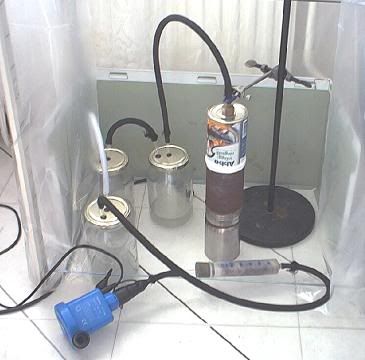Not the exact thread to be mentioning it but for catalytic SO2 > '3 burning, or any catalysis for that matter, has anyone *ever* thought about an old dead automobile catalytic converter? Available in all sorts of sizes and even a pretty bad (free) one is bound to have more than enough PGM on it to suffice, after burning off the soot or chipping out melted ceramic to get it operable.
I have one and, after heating the honeycomb up to orange heat with my propane burner, I can shut it off and turn it back on. Hotspots light up and it burns the gas/air mixture flamelessly.

Tim

 would react with oxygen and form
SO<sub>3</sub>. To use it, you’d put it in a large container with air and some water, light the candle, seal the container, then wait
for the flame to go out and all of the SO<sub>3</sub> to hydrolysize. Then simply open the container, replace the air, and relight.
would react with oxygen and form
SO<sub>3</sub>. To use it, you’d put it in a large container with air and some water, light the candle, seal the container, then wait
for the flame to go out and all of the SO<sub>3</sub> to hydrolysize. Then simply open the container, replace the air, and relight.
